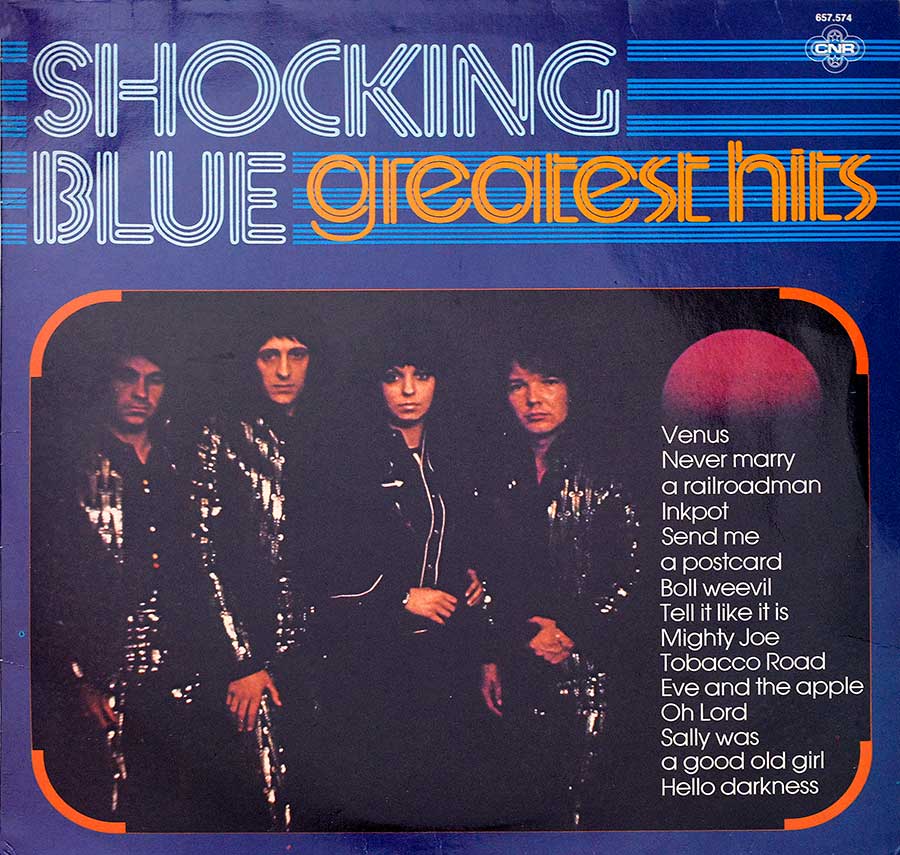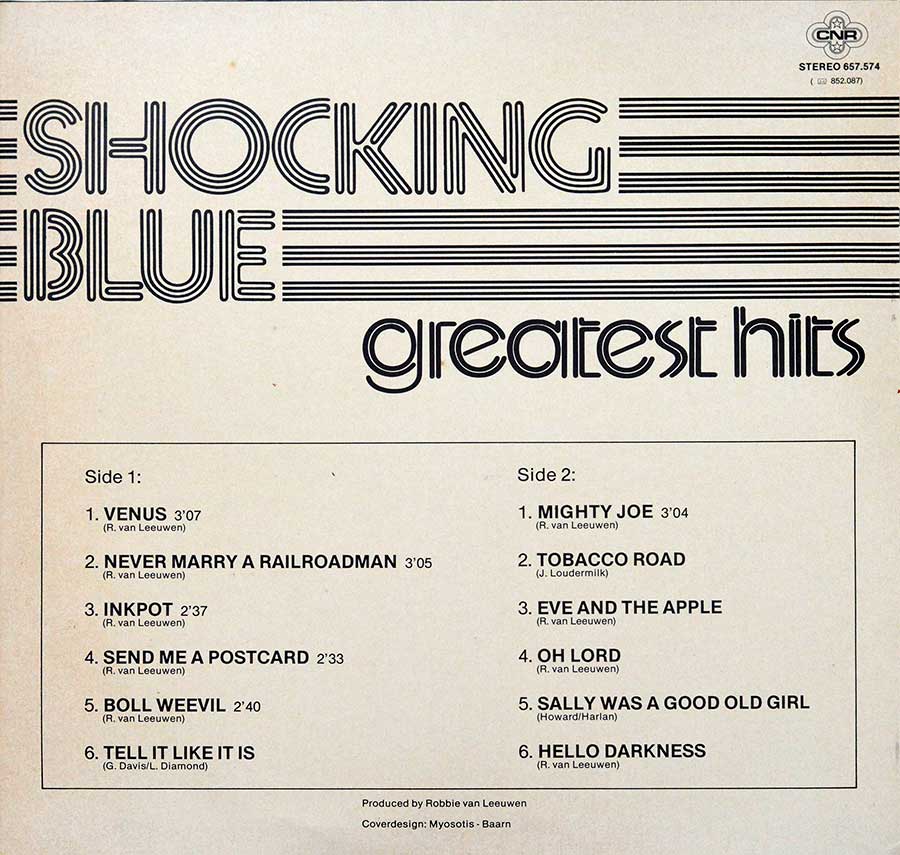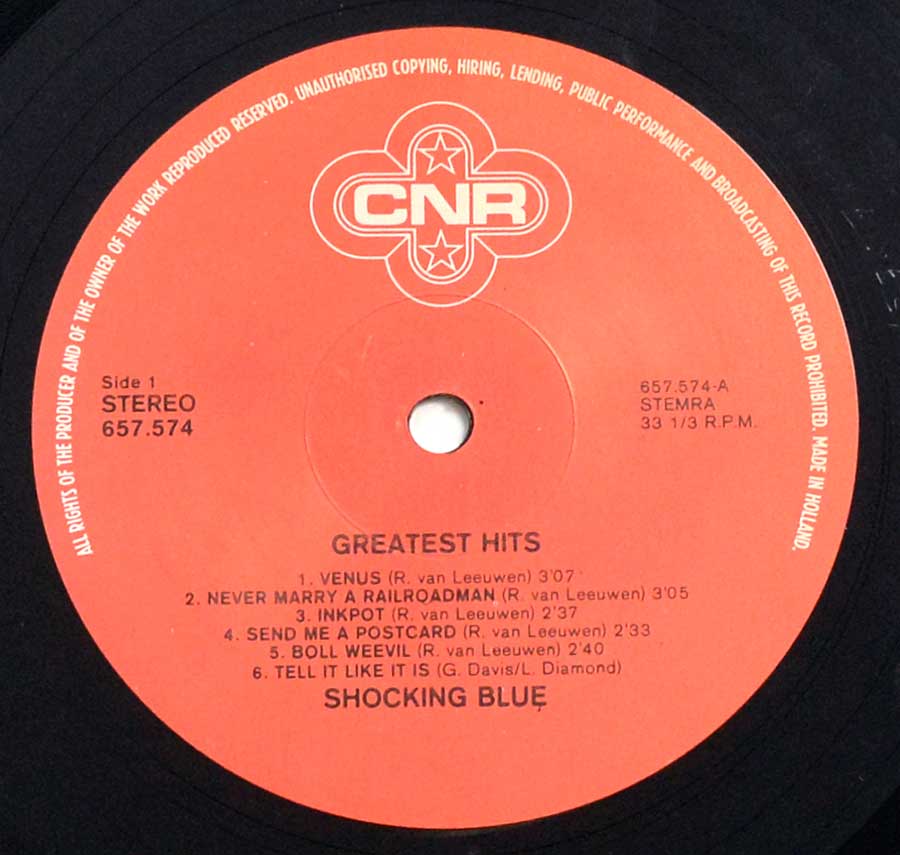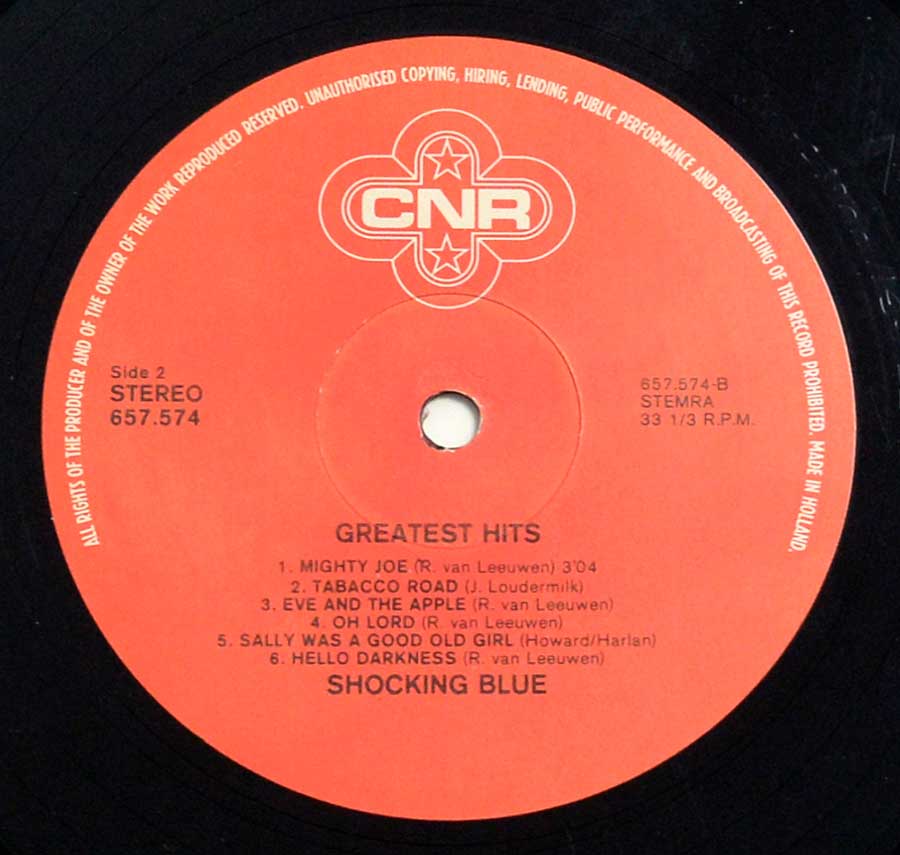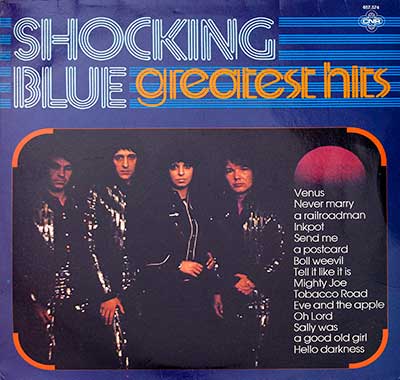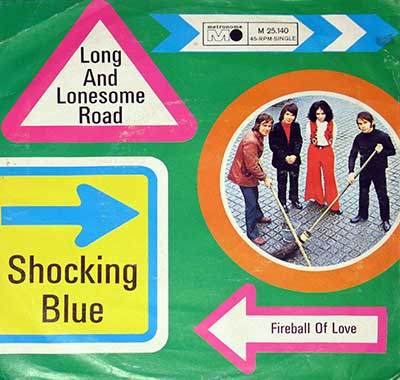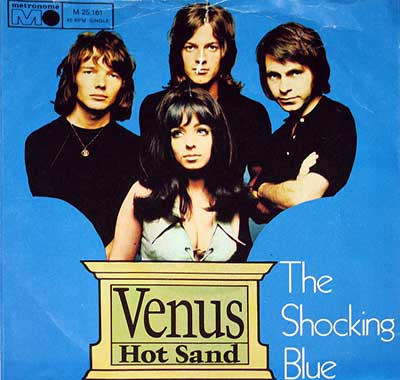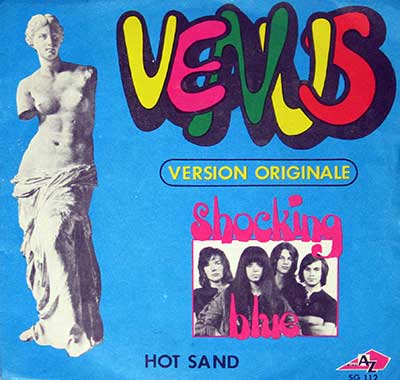SHOCKING BLUE – ÒGreatest HitsÓ: Nederbeat in Full Flight Album Description:
Pressed in the Netherlands in 1980, this CNR anthology corrals Shocking BlueÕs most potent sides and frames the Hague sound with brisk economy: chiming guitars, sitar spice, Farfisa glow, and Mariska Veres cutting clean through the mix. Credited to band architect Robbie van Leeuwen, it reads like a precise map of where Dutch pop met transatlantic radio.
Historical context: The Hague goes global
Shocking Blue came out of The HagueÕs fertile Nederbeat scene in 1967, a pocket of post-Beat explosion where local bands wrote with export in mind. By early 1970, ÒVenusÓ had done the improbableÑNo. 1 in the U.S.Ñwhile still peaking at No. 3 at home, proof that a Dutch group could storm foreign charts without surrendering its Euro-garage DNA.
Band events that shaped the music
Van Leeuwen formed the group, then made the defining personnel move: replacing original singer Fred de Wilde with Mariska Veres in late Õ68. The change tightened the songwriting and sharpened the bandÕs attack. Subsequent years brought relentless singles, a much-talked-about Japan trip and live set, and, by 1974, departures that ended the classic runÑcontext that makes this set feel like a fast-moving documentary.
Musical exploration on the LP
ÒVenusÓ sets the template: a spring-loaded riff, organ stitching the groove, and Veres delivering the hook with quicksilver certainty. ÒMighty JoeÓ leans tougherÑtom-driven and cinematicÑwhile ÒNever Marry a Railroad ManÓ shifts to cautionary folk-pop with a chorus built to carry across soccer terraces. ÒSend Me a PostcardÓ is the fuzz-pop missile; ÒInkpotÓ and ÒEve and the AppleÓ show the bandÕs knack for concise, melodic turns that finish before you expect. Across the sequence you hear van LeeuwenÕs songwriterÕs toolkit: modal color, economical bridges, and choruses that click shut like a well-made case.
Controversies & talking points
ÒVenusÓ has long invited debate over lineage: its guitar figure traces back to ÒThe Banjo SongÓ by the Big 3Ña wink that critics and fans still chew on when weighing originality versus transformation. For a band that otherwise kept headlines out of the papers, this musical footnote remains the lightning rod.
How it played in the Netherlands:
Chart peaks on the official Dutch Top 40 for songs featured on this LP:
- Mighty Joe Ñ peak #1 (1969)
- Never Marry a Railroad Man Ñ peak #1 (1970)
- Venus Ñ peak #3 (1969)
- Inkpot Ñ peak #5 (1972)
- Hello Darkness Ñ peak #6 (1970)
- Send Me a Postcard Ñ peak #11 (1968)
- Eve and the Apple Ñ peak #13 (1972)
- Oh Lord Ñ peak #14 (1973)
- Long and Lonesome Road Ñ peak #17 (1969)
Read that list like a setlist: the No. 1 pair supply the sing-back thunder, ÒVenusÓ brings international lift, and the mid-chart jewels keep the pacing briskÑshort songs, strong middles, clean exits.
Why this compilation works
Sequenced like radio, the set compresses four frantic years into a half-hour that still moves. Van LeeuwenÕs production credit ties the arc together; VeresÕ voice turns it into a story. You come for the global smash, stay for the Dutch craft, and leave hearing how a local scene engineered its own passport.
